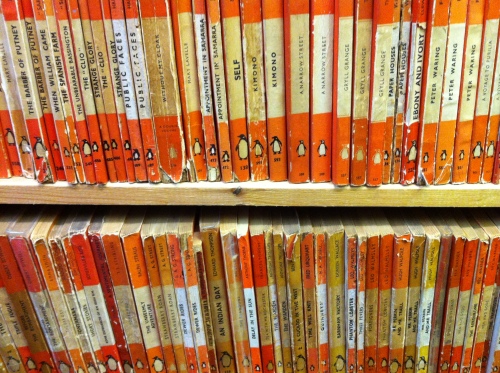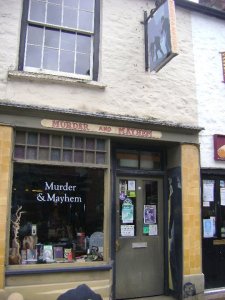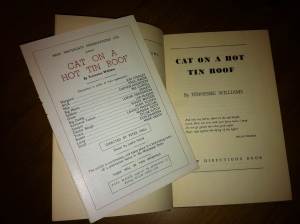Last weekend, as well as the obligatory Bank Holiday DIY (painting the bedroom, in case you’re interested) I managed to fit in a bit of work on the book. While going through my note books for the section on Louisiana I’m currently working on, I realised that exactly a year ago I was caught up in a little Southern drama of my own, down in New Orleans.
Now, the Crescent City is a favourite destination of mine – I was bewitched by her spell many years ago. It was wandering this city, tracing the footsteps, and bar tabs of so many literary greats that first gave me the idea for the book. But, while famous the world over for a rich and thriving culture – the impressive literary heritage, the toe-tapping jazz and the taste bud-zinging, life affirming (if not always life-prolonging) cuisine, New Orleans is also known for her extreme weather.
Hurricanes can come off the Gulf of Mexico any time from June to December, though the season generally peaks in late August through September. During these months, any local or frequent visitor knows to acquaint themselves with Margaret Orr’s nightly forecast, and to get really concerned when CNN’s Anderson Cooper arrives in his waterproofs, closely followed by national news teams booking up rooms at The Royal Sonesta in the Quarter, its sturdy iron balconies perfect for storm-whipped pieces to camera.
Being in New Orleans during the late summer months, where daily temperatures hover in the 90ies really allows you to get a feel for the sass and sizzle that drips from the pages of Southern literature. Just as the tension and heat in Southern storytelling simmers and swirls, building slowly to boiling point, suddenly giving way to the inevitable almighty crescendo of a storm, so too does the local climate.
I’ve visited my beloved Big Easy at many different times throughout the year, most recently in March for the Tennessee Williams New Orleans Literary Festival. But for me, it is those long, lazy, last days of summer that I love best.
Until last year, I’d always been very lucky with the weather. Other than a few tense hours on the I- 55 between McComb and Jackson, Mississippi in the company of tropical storm Lee, I’d only ever experienced the occasional unexpected downpour. So, last August, when a slow moving tropical cyclone named Isaac first started to cause concern in the Caribbean, I reacted accordingly: I kept up with the weather forecast, kept an eye out for Mr Anderson and carried on with my trip.
When Isaac hit the Gulf of Mexico a few days later, it was reclassified as a hurricane; seemingly one with an interest in American politics. Initial tracking systems predicted that it was headed straight for the Republican National Convention, being held in Florida later that week. I still wasn’t overly concerned. I listened to the TV news discussions on whether the RNC should and could be cancelled so close to an election and watched report after report on the hike in the price of Florida orange juice. I met up with friends who had flown in from Jupiter, Florida for a few days and listened in a bustling bar on Bourbon St as they described storm-proofing their home before leaving.
That evening we were joined by friends from Texas, and for the next couple of days, in gloriously hot sunshine we all set about putting New Orleans’ motto – Laissez les Bon Temps Rouler, into action.
Then Isaac changed his mind. He wasn’t heading for Florida after all, but was now making a beeline for the Louisiana coastline. Newscasters nervously noted similarities with the path of Hurricane Katrina. Though now downgraded to a tropical storm, meteorologists predicted that when Isaac made landfall, it would do so as a category 2 hurricane. That was, they said, likely to happen the day after tomorrow, August 27th. One day shy of Katrina’s seventh anniversary.
My phone pinged with a message from my friend Ken, a local who knows a thing or two about hurricanes. As a volunteer with the Red Cross, he’s stared down several, including Katrina.
‘Not to alarm you too much’ began the message. Uh-oh I thought.
‘I think you’d better at least start considering evacuation plans. This is a big storm.
I’ll be evacuating to the (Red Cross) Northshore offices, setting up shelters. So if you can’t get out, then you can ride with me up to Madisonville and stay at a Red Cross shelter there.’
Calls were made in the hope of changing flights. The lines were jammed. When I finally got through, I was told that all flights that day and the next were fully booked, but that extra departures were being scheduled. I was placed on a waiting list with a promise of phone call to confirm my seat within the next hour.
I still had appointments to keep, this was after all a work trip, so I headed into the Quarter where I’d arranged to meet one of Tennessee Williams’ old poker playing pals for coffee. We sipped and chatted as the café owner hammered hurricane shutters into place over the windows. As he dragged sandbags towards the doorway he told us that he was heading up to Baton Rouge later that evening to ‘sit out the storm at my sister’s place.’
‘Oh, I’m gonna hunker down here’ said my companion.
‘I’ve got my generator and enough groceries. And anyhow, my cat hasn’t been fussing so much about this one.’
I must have looked a little bemused.
‘Oh yes, she was just about crazy before Katrina came. Animals sure have a sense for these things.
You know, right before Katrina, I heard the lizards at the zoo escaped. As far as I know there are no missing reptiles today.’
Walking back to my hotel, the deserted rues of the Vieux Carre gave me an uneasy feeling. Louisiana’s Governor had declared a state of emergency. Some of the bars on Bourbon had flyers taped to their boarded-up windows advertising storm parties that night. When the airline finally called to tell me I’d be on the last flight to Charlotte, North Carolina the following evening, I was passing the speedboat used to make over 600 rescues in the aftermath of Katrina, now anchored on dry land outside the Presbytere on Jackson Square.
The following morning the hotel manager pushed a note under my door to say that they planned to remain open, but once Isaac hit there would be no electricity, water or staff other than himself and a deputy on site. It was time to leave.
Getting to airport wasn’t easy. The roads leaving the city were gridlocked. Though many residents were taking their chances and staying put, many more, or so it seemed, were spending long hours sitting in their SUVs surrounded by their most treasured possessions.
‘Not joining them?’ I asked my taxi driver, nodding towards the cars surrounding us on the I- 10.
‘Naw honey. These types a things, you jus’ gotta learn how to do things your own way.’
With both a heavy heart and total relief I boarded my flight. As the plane took off into a blue-grey brooding sky, I also felt a sense of guilt. As if I were abandoning a friend in need.
Isaac did his worst. Homes were devastated and people lost their lives. New Orleans, as always, picked herself up and got on with the job of recovery.
Remembering the events of last year, I emailed my friend Ken.
‘It’s hot, humid and rainy here’ he replied
‘But that’s New Orleans in August!’


















